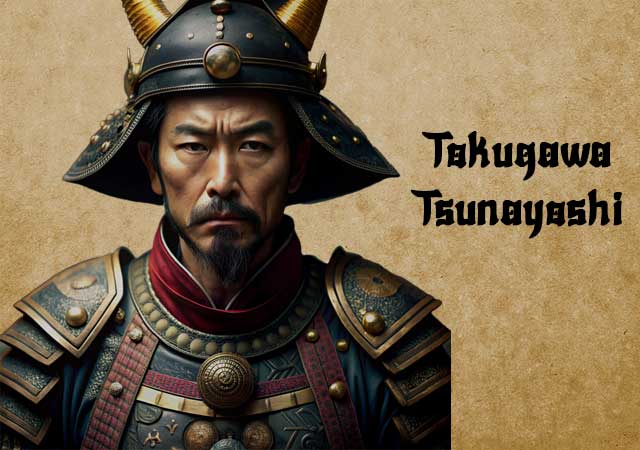
Tokugawa Tsunayoshi, the fifth Shogun of the Edo period, famously known as the Dog Shogun, was raised as a scholar rather than a warrior due to concerns that his lively nature might pose a threat to his elder brothers' positions. Despite his brother Ietsuna assuming the role of Shogun, his premature death at 39 sparked a power struggle that eventually led to Tsunayoshi being appointed as Shogun. Unlike his predecessors, Tsunayoshi relied heavily on the counsel of his mother rather than military advisors or regents.
Tsunayoshi's reign was marked by strict and unpopular laws influenced by his strong religious and Confucian beliefs. He implemented regulations such as the prohibition of red-light districts, the ban on the use of luxurious fabrics in daily life, and the restriction of women from working in tea houses. Displaying authoritarian control, he frequently seized lands and titles from the nobility and held lengthy sessions at Edo Castle where he lectured daimyo on neo-Confucianism and other religious doctrines.
Numerous natural disasters, including devastating typhoons and the eruption of Mount Fuji, occurred during Tsunayoshi's rule, alongside significant events like the Chushingura, or the 47 Ronin Incident. Additionally, being born in the Year of the Dog, Tsunayoshi issued decrees to protect dogs, making it a punishable offense to mistreat them, which earned him the moniker "Dog Shogun." His efforts resulted in a surge of stray dogs in Edo, leading to unpleasant odors permeating the city.
Tsunayoshi's patronage extended to the arts, particularly Noh theater. In 1692, he arranged for a Dutch embassy to observe foreign behavior, rewarding them with a Noh performance. His sudden death on February 19, 1709, just before his 63rd birthday, was attributed to measles, although some speculate that he was assassinated by his wife, possibly due to his controversial plans regarding his heir. He was succeeded by his nephew, Tokugawa Ienobu.
See also
-
Hojo Soun

Hōjō Nagaudji was one of the prominent military commanders of the late Muromachi period. Thanks to a successful marriage alliance and skillful use of political intrigue, he managed to concentrate full power over the provinces of Suruga, Izu, and Sagami in his own hands. His origins remain unclear, but there is a possibility that he was connected to the Heiji clan of Ise Province, since early in his life he bore the name Ise Shinkurō.
-
Hirano Nagayasu
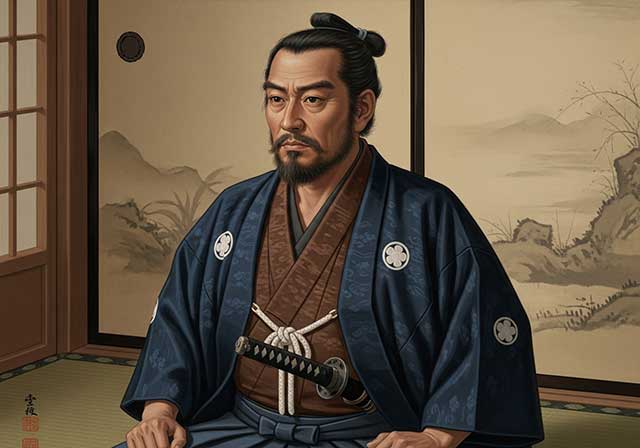
From an early age, Hirano Nagayasu was in the service of Toyotomi Hideyoshi, since Nagayasu’s father, Nagaharu, had faithfully served Hideyoshi during Hideyoshi’s own childhood. Thus, the connection between the Hirano family and the Toyotomi house was established long before Hideyoshi’s rise to power and took the form of hereditary vassal loyalty.
-
Hattori Hanzo

Hattori Hanzō, also known by the name Hattori Masanari, was the third son of Hattori Yasunaga, a samurai who served the Matsudaira clan. In his childhood he was called Tigachi Hanzō. His father held the highest rank in the shinobi hierarchy, that of jōnin, and Hanzō followed in his father’s footsteps, choosing the same path.
-
Hatano Hideharu
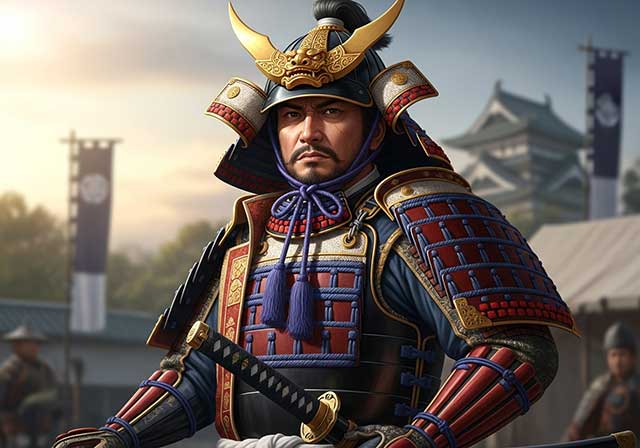
Hatano Hideharu was the eldest son of Hatano Harumichi, the head of the Hatano clan. However, in childhood he was adopted by his uncle, Hatano Motohide, and was therefore formally regarded as Motohide’s heir. From the time of Hideharu’s grandfather, Hatano Tanemichi, the Hatano clan had been a vassal of the powerful Miyoshi house, which exerted considerable influence over the Ashikaga shoguns and effectively shaped the political situation in the region. Early in his career, Hideharu served Miyoshi Nagayoshi and, judging by surviving records, held a fairly high position within his lord’s hierarchy, as he was among the select group invited to the enthronement ceremony of Emperor Ōgimachi in 1557.
-
Fukushima Masanori
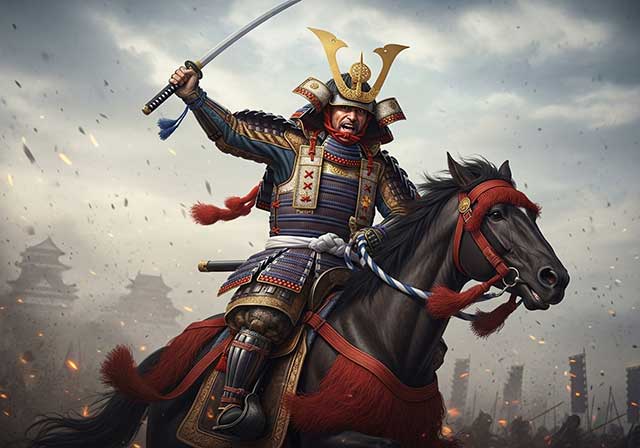
Fukushima Masanori, a samurai from Owari Province, served Toyotomi Hideyoshi and took part in the Battle of Shizugatake, where he distinguished himself so conspicuously that he was awarded the honorary title of one of the “Seven Spears of Shizugatake,” meaning the warriors who had shown the greatest valor in the battle. As a reward for his courage and martial prowess, he was granted land producing an income of 5,000 koku of rice.
-
Uemura Masakatsu
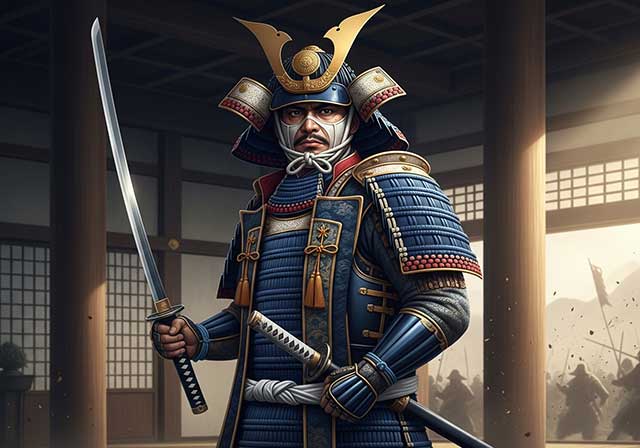
Masakatsu was a member of the Uemura clan and the son of Uemura Masatada; from an early age he served Tokugawa Ieyasu. During the Ikkō-ikki uprising in Mikawa Province in 1563, having converted from the Jōdo Shinshū Buddhist sect to the Jōdoshū sect, he took part in suppressing the rebels. After these events, Masakatsu was appointed a military governor and was granted land holdings. According to a number of sources, he was one of the so-called “Three Governors of Mikawa” (Mikawa sanbugyō), together with Amano Yasukage (1537–1613) and Koriki Kiyonaga (1530–1608).
-
Tomoe Gozen

Gozen is regarded as one of the few historically documented examples of true female warriors of feudal Japan, known as onna-musha or onna-bugeisha. Although Japanese history records countless women who at various times were forced to take up arms—for example, in defense of their castles—Tomoe Gozen was, without any doubt, a genuinely skilled and accomplished fighter. She was the wife of Kiso (Minamoto) Yoshinaka, although The Tale of the Heike describes her more as a female vassal. Yoshinaka rose in rebellion against the Taira clan and, in 1184, captured Kyoto after his victory at the Battle of Kurikawa. After the Taira were driven into the western provinces, Yoshinaka began insistently asserting that he alone was worthy of assuming leadership of the Minamoto clan and taking on the mantle of its head.
-
Tachibana Muneshige

Tachibana Muneshige was born the eldest son of Takahashi Shigetane, one of the principal retainers of the Ōtomo clan and commander of Iwaya Castle. In childhood, he bore the name Senkumamaru. His early years coincided with a period of intense military confrontation between the Ōtomo clan and other powerful warrior houses of Kyūshū—namely the Shimazu, Akizuki, and Ryūzōji clans.

